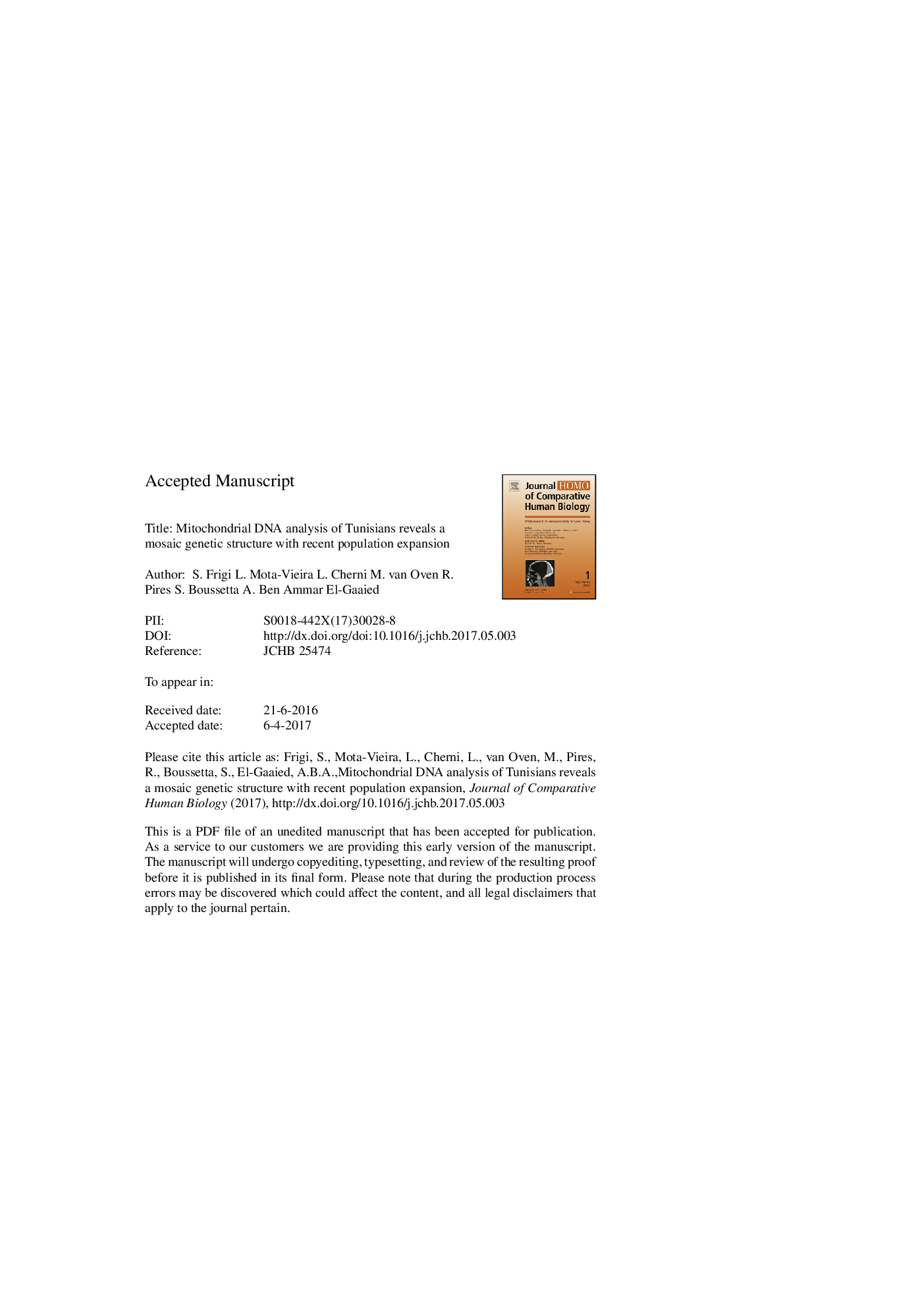| Article ID | Journal | Published Year | Pages | File Type |
|---|---|---|---|---|
| 4760427 | HOMO - Journal of Comparative Human Biology | 2017 | 46 Pages |
Abstract
Tunisia is a country of great interest for human population genetics due to its strategic geographic position and rich human settlement history. These factors significantly contributed to the genetic makeup of present-day Tunisians harbouring components of diverse geographic origins. Here, we investigated the genetic structure of Tunisians by performing a mitochondrial DNA (mtDNA) comparison of 15 Tunisian population groups, in order to explore their complex genetic landscape. All Tunisian data were also analysed against 40 worldwide populations. Statistical results (Tajima's D and Fu's FS tests) suggested recent population expansion for the majority of studied populations, as well as showed (AMOVA test) that all populations were significantly different from each other, which is evidence of population structure even if it is not guided by geographic and ethnic effects. Gene flow analysis revealed the assignment of Tunisians to multiple ancestries, which agrees with their genetic heterogeneity. The resulting picture for the mtDNA pool confirms the evidence of a recent expansion of the Tunisian population and is in accordance with a mosaic structure, composed by North African, Middle Easterner, European and Sub-Saharan lineages, resulting from a complex settlement history.
Related Topics
Life Sciences
Agricultural and Biological Sciences
Ecology, Evolution, Behavior and Systematics
Authors
S. Frigi, L. Mota-Vieira, L. Cherni, M. van Oven, R. Pires, S. Boussetta, A. Ben Ammar El-Gaaied,
